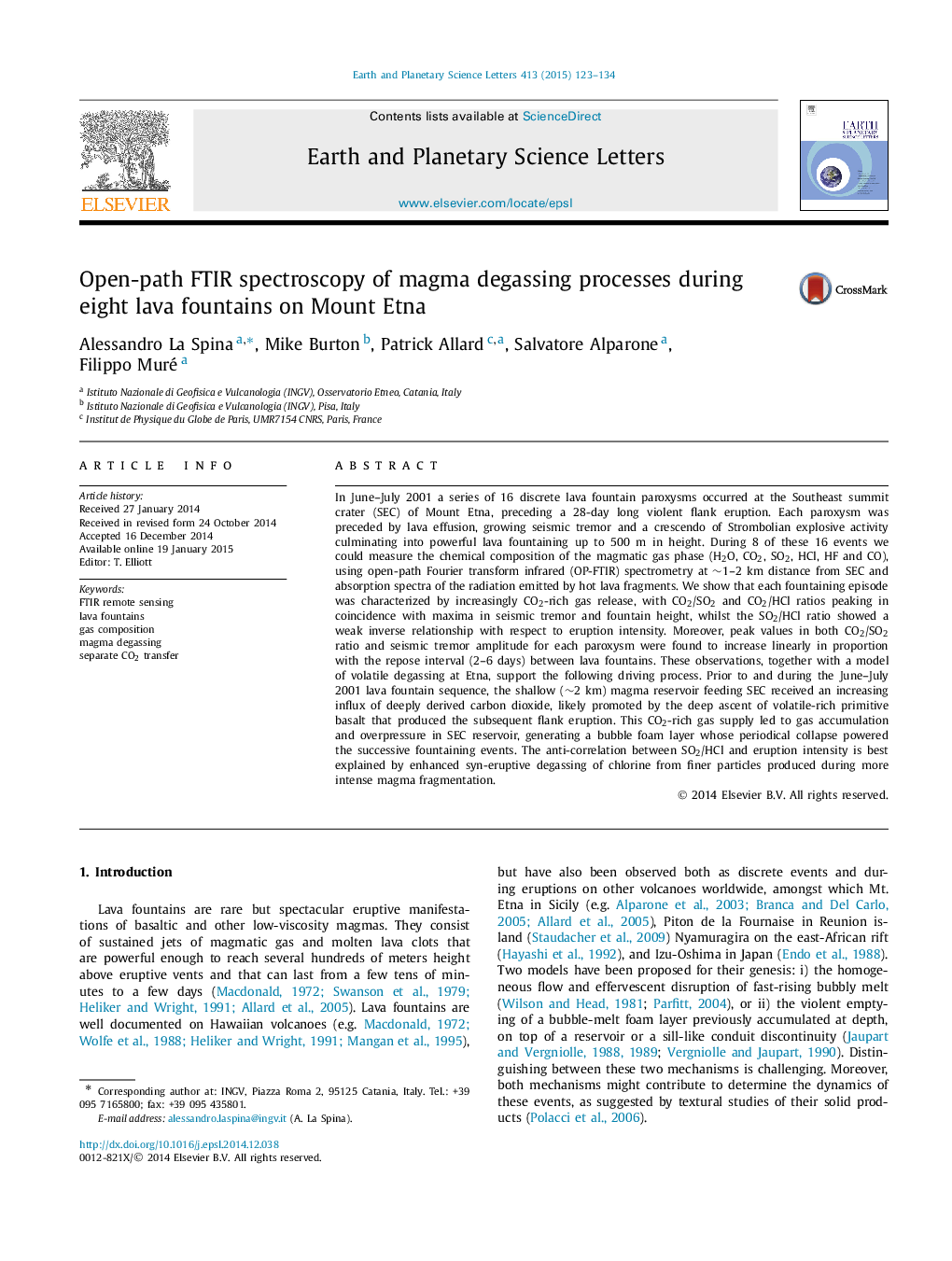| کد مقاله | کد نشریه | سال انتشار | مقاله انگلیسی | نسخه تمام متن |
|---|---|---|---|---|
| 6428602 | 1634743 | 2015 | 12 صفحه PDF | دانلود رایگان |

- Results from 8 lava fountains in a sequence prior to the 2001 eruption of Mt. Etna.
- Empirical evidence on a volcanological process as lava fountains.
- Each fountaining episode was characterized by increasingly CO2-rich gas release.
- CO2/SO2 and tremor amplitude increase linearly with the time between lava fountains.
In June-July 2001 a series of 16 discrete lava fountain paroxysms occurred at the Southeast summit crater (SEC) of Mount Etna, preceding a 28-day long violent flank eruption. Each paroxysm was preceded by lava effusion, growing seismic tremor and a crescendo of Strombolian explosive activity culminating into powerful lava fountaining up to 500 m in height. During 8 of these 16 events we could measure the chemical composition of the magmatic gas phase (H2O, CO2, SO2, HCl, HF and CO), using open-path Fourier transform infrared (OP-FTIR) spectrometry at â¼1-2 km distance from SEC and absorption spectra of the radiation emitted by hot lava fragments. We show that each fountaining episode was characterized by increasingly CO2-rich gas release, with CO2/SO2 and CO2/HCl ratios peaking in coincidence with maxima in seismic tremor and fountain height, whilst the SO2/HCl ratio showed a weak inverse relationship with respect to eruption intensity. Moreover, peak values in both CO2/SO2 ratio and seismic tremor amplitude for each paroxysm were found to increase linearly in proportion with the repose interval (2-6 days) between lava fountains. These observations, together with a model of volatile degassing at Etna, support the following driving process. Prior to and during the June-July 2001 lava fountain sequence, the shallow (â¼2 km) magma reservoir feeding SEC received an increasing influx of deeply derived carbon dioxide, likely promoted by the deep ascent of volatile-rich primitive basalt that produced the subsequent flank eruption. This CO2-rich gas supply led to gas accumulation and overpressure in SEC reservoir, generating a bubble foam layer whose periodical collapse powered the successive fountaining events. The anti-correlation between SO2/HCl and eruption intensity is best explained by enhanced syn-eruptive degassing of chlorine from finer particles produced during more intense magma fragmentation.
Journal: Earth and Planetary Science Letters - Volume 413, 1 March 2015, Pages 123-134